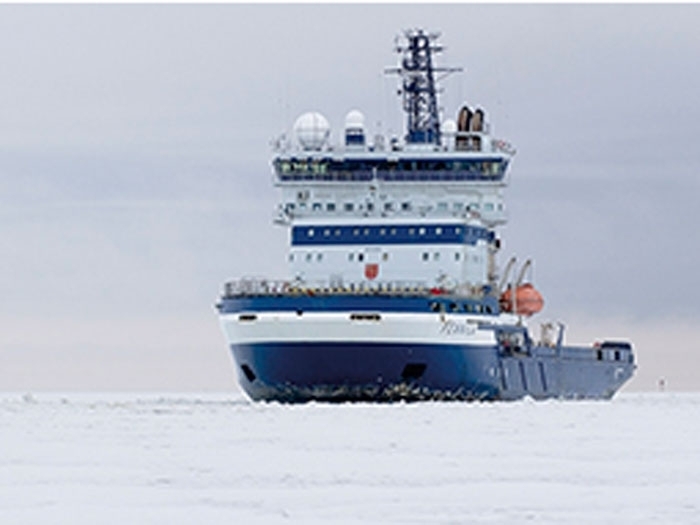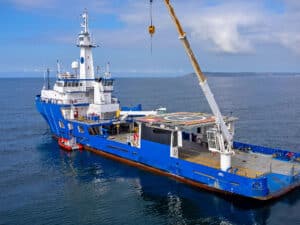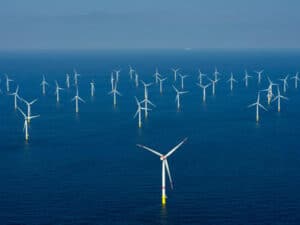
Shell gets BSEE approval for Alaska drilling
Written by Nick Blenkey
BSEE says capping stack, staged on Fennica, is now in drilling region
AUGUST 17, 2015 — The Bureau of Safety and Environmental Enforcement (BSEE) has now given Shell the go ahead to conduct exploratory drilling activities into potential oil-bearing zones offshore Alaska at one of the wells at the Burger Prospect, Burger J.
The company remains limited to the top section of the Burger V well.
Shell submitted an application on August 6 to modify the Burger J Application for Permit to Drill (APD), which previously restricted Shell from drilling into oil-bearing zones since a capping stack was not on hand and deployable within 24 hours, as required by BSEE.
The capping stack is staged on the the Finnish multipurpose icebreaker Fennica. It has been undergoing repairs at Vigor Industrial’s Portland, OR, shipyard after being forced back to Dutch Harbor, AK, after incurring a one inch wide by three foot long hull fracture.
A capping stack is a critical piece of emergency response equipment designed to shut in a well in the event of a loss of well control.
BSEE says that the capping stack is now in the region and capable of being deployed within 24 hours.
“Activities conducted offshore Alaska are being held to the highest safety, environmental protection, and emergency response standards,” said BSEE Director Brian Salerno. “Now that the required well control system is in place and can be deployed, Shell will be allowed to explore into oil-bearing zones for Burger J. We will continue to monitor their work around the clock to ensure the utmost safety and environmental stewardship.”
Shell is still prohibited from simultaneous drilling at Burger J and V, in accordance with the approved APDs, which define limitations related to marine mammal protection consistent with requirements established by the U.S. Fish and Wildlife Service (USFWS). Consistent with regulatory requirements, a USFWS Letter of Authorization (LOA) issued on June 30 requires Shell to maintain a minimum spacing of 15 miles between active drill rigs during exploration activities to avoid significant effects on walruses in the region.
Under the LOA, Shell is also required to have trained wildlife observers on all drilling units and support vessels to minimize impacts to protected species. Shell must stay within explicitly outlined vessel operating speeds and report daily regarding all vessel transits.
To ensure compliance with this and other conditions, BSEE safety inspectors have been present on the drilling units Noble Discoverer and Transocean Polar Pioneer 24 hours a day, seven days a week to provide continuous oversight and monitoring of all approved activities.
The inspectors are authorized to take immediate action to ensure compliance and safety, including cessation of all drilling activities, if necessary. BSEE experts have been engaged in thorough inspections of both drilling units and Shell’s response equipment.The Burger Prospect is located in about 140 feet of water, 70 miles northwest of the village of Wainwright.BSEE says that its close oversight of drilling operations in the Chukchi Sea this year is consistent with its continuing efforts over the past five years to upgrade safety standards to improve the safety of offshore oil and gas development. In addition, building on the lessons learned from Shell’s 2012 drilling operations in the offshore Arctic and incorporating the recommendations of a Departmental review of those activities, the Bureau of Ocean Energy Management (BOEM) on May 11, 2015, provided conditional approval of Shell’s Exploration Plan, which established numerous additional stringent safety requirements.





Leave a Reply
You must be logged in to post a comment.